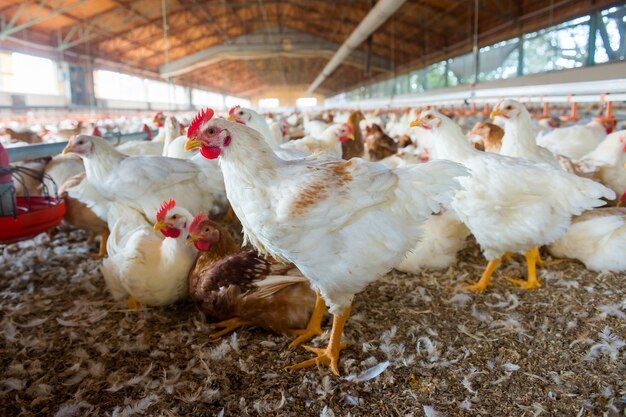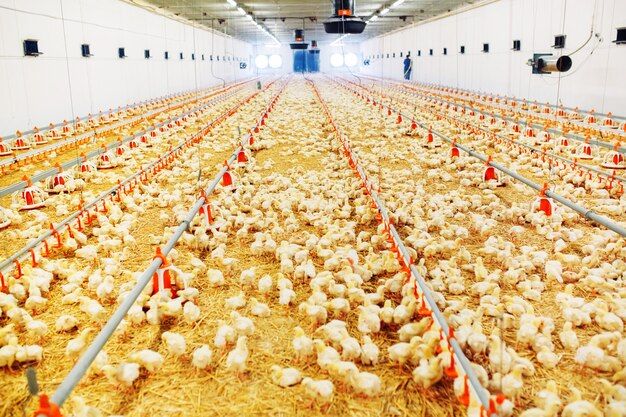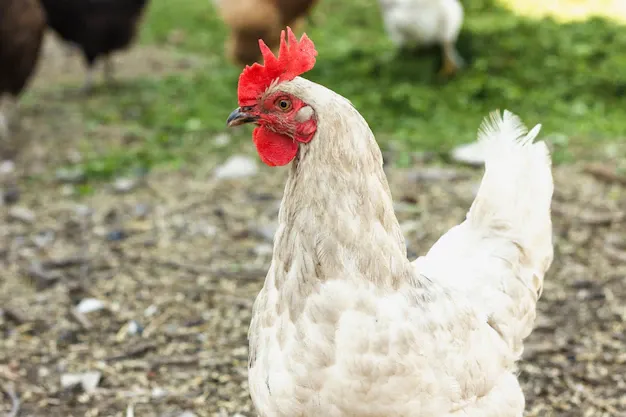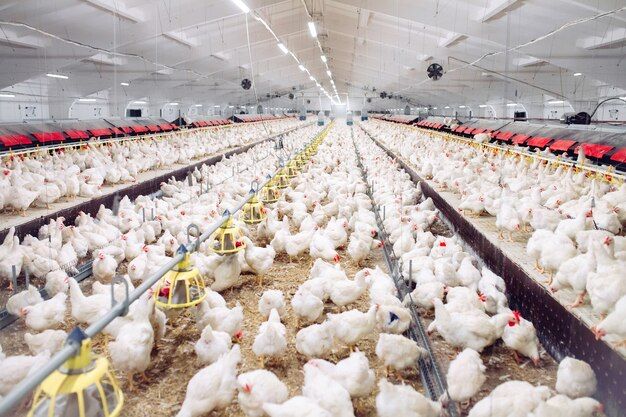Broiler chickens are the most commonly consumed type of chicken worldwide, raised specifically for meat production. They are bred and raised in environments optimized for rapid growth and efficient meat production, usually under controlled conditions in large-scale commercial farms. Over the years, broiler chickens have become a staple in many diets due to their affordability, taste, and ease of preparation. However, the consumption of broiler chicken has its share of benefits and drawbacks, which can be analyzed from a variety of perspectives including health, ethical concerns, environmental impact, and economic considerations.
Advantages of Eating Broiler Chicken
1. Nutritional Benefits
Broiler chicken is rich in high-quality protein, essential for muscle repair, immune system function, and overall body maintenance. Chicken is an excellent source of several vitamins and minerals, including:
B Vitamins: Chicken is particularly high in B vitamins, especially niacin (vitamin B3) and pyridoxine (vitamin B6), both of which play crucial roles in energy metabolism, brain function, and red blood cell production.
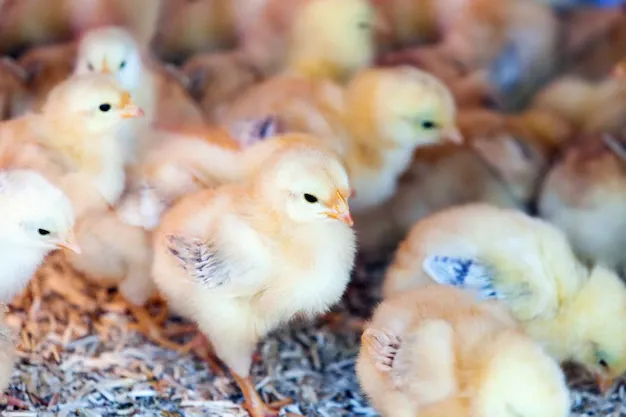
Iron: While chicken is not as rich in iron as red meats, it still provides a valuable source of this mineral, which is essential for oxygen transport in the blood.
Phosphorus: This mineral is important for the formation of bones and teeth and helps in the proper functioning of kidneys, muscles, and nerves.
Selenium: Broiler chicken provides a good amount of selenium, a trace mineral that acts as an antioxidant and helps in the functioning of the thyroid.
Moreover, chicken is a lean source of protein, particularly when the skin is removed. It contains less fat and fewer calories than red meat, making it a suitable option for those watching their calorie intake or looking to maintain a healthy weight.
2. Affordability
One of the most significant advantages of eating broiler chicken is its cost-effectiveness. Compared to other animal proteins like beef, pork, and lamb, chicken is typically much more affordable. This makes it accessible to a wide range of consumers, especially in countries where economic constraints are a concern. The affordability of broiler chicken has contributed to its widespread consumption across the globe, particularly in developing countries where meat is often considered a luxury.
3. Versatility in Cooking
Broiler chicken is incredibly versatile and can be prepared in numerous ways, from grilling, baking, and frying, to boiling and roasting. It can be used in a variety of cuisines, and the mild flavor of chicken allows it to pair well with a wide range of seasonings and ingredients. This flexibility makes it a popular choice in both home cooking and commercial food production.
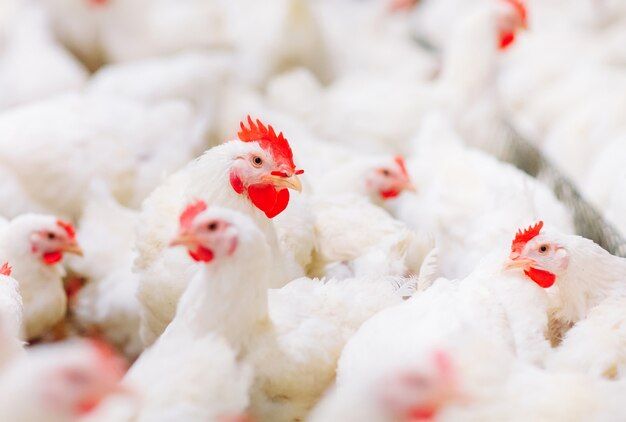
4. Low in Saturated Fat
Broiler chicken, particularly the breast meat, is relatively low in saturated fat compared to other animal proteins such as beef or lamb. Excessive consumption of saturated fats has been linked to an increased risk of heart disease and other chronic health conditions. By including lean cuts of chicken in the diet, individuals may be able to reduce their intake of unhealthy fats.
5. Quick and Easy to Cook
Unlike some other types of meat that require longer cooking times (such as beef or pork), broiler chicken cooks relatively quickly, which can save time for busy individuals and families. Its ease of preparation makes it an attractive option for those looking for a fast, convenient meal.
6. Source of Omega-3 Fatty Acids
While chicken is not as rich in omega-3 fatty acids as fatty fish, it does provide a modest amount of these essential fats, especially if the chickens are raised on a diet that includes flaxseed or other omega-3-rich foods. Omega-3 fatty acids are important for brain health, reducing inflammation, and supporting cardiovascular health.
Disadvantages of Eating Broiler Chicken
Despite the numerous advantages, the consumption of broiler chicken also has its fair share of drawbacks, which should be considered when making dietary choices.
1. Health Concerns: Antibiotics and Hormones
One of the most pressing health concerns surrounding the consumption of broiler chicken is the use of antibiotics and hormones in industrial chicken farming. In many countries, broiler chickens are routinely given antibiotics to promote rapid growth and prevent diseases that can spread in crowded, unsanitary conditions.
Antibiotic Resistance: The overuse of antibiotics in poultry farming is a major contributor to the growing problem of antibiotic-resistant bacteria. These bacteria can make human infections harder to treat, potentially leading to longer hospital stays, higher medical costs, and increased mortality.
Hormones and Growth Promoters: In some regions, the use of growth-promoting hormones is permitted, although this practice is banned in several countries, including the European Union. While the use of hormones is not proven to have significant effects on human health, the presence of synthetic substances in the meat may raise concerns for some consumers.
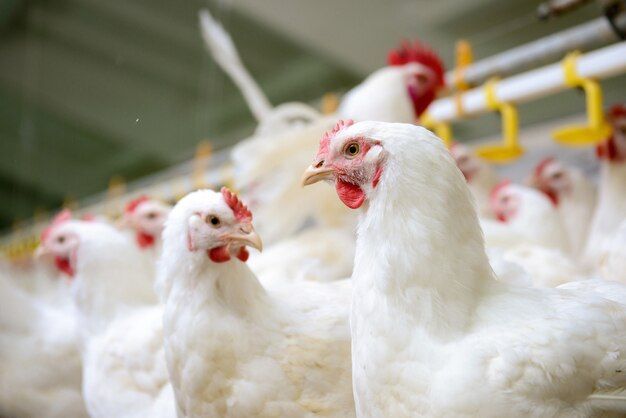
2. Ethical Issues: Animal Welfare
Broiler chicken farming often involves raising large numbers of chickens in confined spaces, a practice known as factory farming. These environments are typically crowded, poorly ventilated, and lacking in natural light, which can lead to significant animal suffering. The ethical issues surrounding factory farming are significant, with concerns about:
Living Conditions: Broiler chickens are often kept in cramped cages or crowded barns, with limited room to move around, engage in natural behaviors, or interact with other chickens.
Health and Well-Being: The rapid growth of broiler chickens, which is often achieved through selective breeding and the use of feed additives, can lead to various health problems, including leg deformities, heart issues, and joint pain.
For some consumers, the ethical implications of supporting industries that engage in such practices are a significant deterrent to consuming broiler chicken.
3. Environmental Impact
The production of broiler chickens, like all forms of animal agriculture, has a significant environmental footprint. Some of the major environmental concerns include:
Greenhouse Gas Emissions: Although chicken farming generally produces fewer greenhouse gases compared to beef and pork production, it still contributes to climate change. The emissions come from various sources, including the transportation of feed, waste management, and the energy-intensive process of raising chickens in large-scale facilities.
Deforestation and Land Use: Large-scale poultry farming often requires significant amounts of land for growing animal feed, including crops like soy and corn. This can lead to deforestation, habitat destruction, and soil degradation.
Water Consumption: Chicken farming is water-intensive, particularly when considering the water required to grow feed crops and the water used in the farming process itself. This puts pressure on local water resources, particularly in areas where water is already scarce.

For environmentally-conscious consumers, these concerns can make broiler chicken a less desirable choice compared to plant-based protein sources.
4. Risk of Foodborne Illness
While chicken is a healthy and safe food when properly handled and cooked, it poses a higher risk of foodborne illness compared to other types of meat. Bacteria like Salmonella and Campylobacter are commonly found in raw poultry and can cause severe food poisoning if the chicken is not cooked to a high enough internal temperature (at least 165°F or 74°C). Cross-contamination from raw chicken during food preparation is another common source of foodborne illness.
Despite advancements in food safety protocols, such as better hygiene practices and more thorough cooking guidelines, the risk of contamination remains a significant issue, particularly in areas with less stringent food safety standards.
5. Nutritional Drawbacks
While chicken is generally a healthy option, it does have some nutritional drawbacks, especially when consumed in large quantities:
High Sodium Content: Processed chicken products, such as chicken nuggets, fried chicken, or pre-cooked meals, can be high in sodium. Excessive sodium intake is associated with increased blood pressure, which is a risk factor for heart disease and stroke.
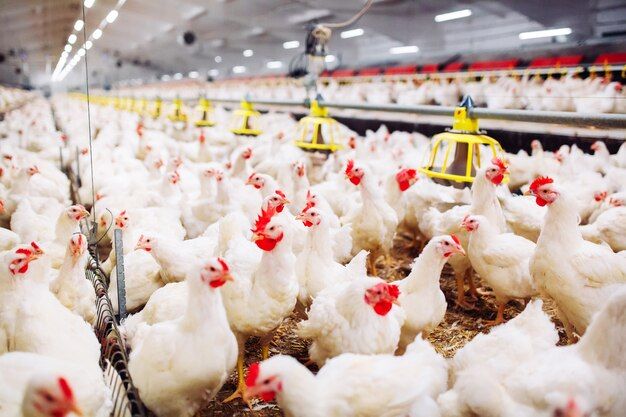
Fat Content in Skin and Dark Meat: While chicken breast is low in fat, the skin and dark meat (such as thighs and wings) can be higher in fat and calories. When not trimmed or prepared healthily, broiler chicken can contribute to an unhealthy diet.
6. Potential for Antibiotic Residues
Despite regulations in many countries, there are still concerns regarding the presence of antibiotic residues in chicken meat. While these residues are generally below safety thresholds, they may pose a risk over the long term if consumed frequently. This is of particular concern in countries where regulations around antibiotic use in agriculture are less stringent.
Eating broiler chicken offers a wide range of advantages, particularly in terms of nutrition, affordability, and versatility. It is a good source of high-quality protein and provides essential vitamins and minerals, making it a valuable part of a balanced diet for many people. Moreover, its affordability and quick cooking times make it an attractive choice for individuals with busy lifestyles.
Video credit for youtube channel
However, there are significant drawbacks to consider as well. The ethical issues surrounding factory farming, the environmental impact of large-scale poultry production, and the potential health risks associated with antibiotic use and foodborne illness are all important factors to weigh. Additionally, the growing concern over antibiotic resistance highlights the need for careful consideration of how broiler chicken is produced and consumed.
Ultimately, the decision to eat broiler chicken depends on individual preferences, priorities, and values. Those who prioritize convenience, nutrition, and cost-effectiveness may find broiler chicken to be a valuable part of their diet. However, for those concerned with ethical considerations, environmental sustainability, or health risks, alternatives like organic, free-range, or plant-based proteins may offer more suitable options. It is essential for consumers to be aware of both the benefits and the risks and make informed choices based on their personal beliefs and circumstances.
